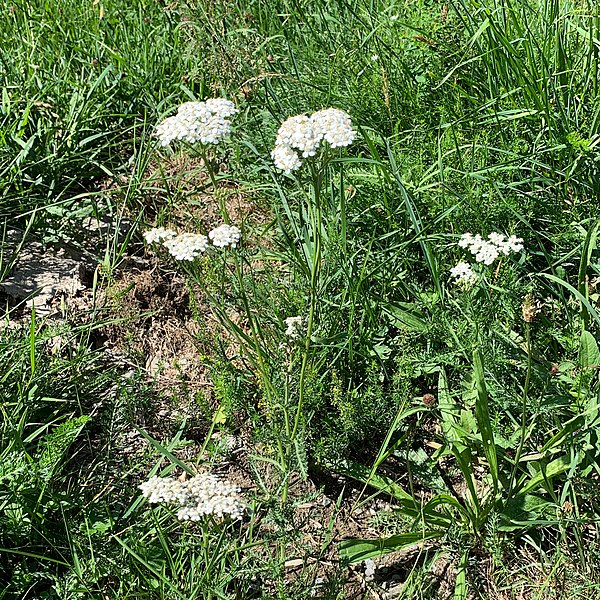Yarrow Identification – Achillea millefolium
Heads up
Yarrow is scientifically known as Achillea millefolium. The name itself has a story. Achillea comes from the ancient Greek hero Achilles, and millefolium means “a thousand leaves” because of its many tiny leaf segments.
Yarrow is part of the Asteraceae family, the same family as daisies and sunflowers.This plant is also called milfoil because it has many leaves. Some people also know it as the nosebleed plant. Why? People in the old days used it when they had nosebleeds.
Yarrow: Key Parts in Photos




Where to find it
This plant is not too fussy about where it grows. It’s happy in both sunny and slightly shady spots. So, on your next outdoor trip, whether you’re in fields, prairies, open woods, or even just walking down a roadside, keep an eye out for Yarrow. Yarrow is modest in height, growing anywhere from 1 to 3 feet tall.
How to identify Yarrow
On top of branching stems, you’ll find flat clusters of flowers, each about 2 to 4 inches wide. Each individual flower might seem tiny, but they come together to form a showy display. These little blooms have up to 6 white or pink petals, with a tiny notch at the tips, and a creamy or yellow center.
Looking at the leaves, you might think of a fern because they’re finely divided and feathery. The longest leaves can stretch up to 6 inches, but they become tinier as you move up the plant. Sometimes, the leaves or stem might have fine hairs.
After the blooming season, the flowers turn into seed heads. These are oval-ish and dry up to a brown color, sticking around even in winter. Each seed is tiny, and unlike some of its relatives, these seeds don’t have fluffy tops.
